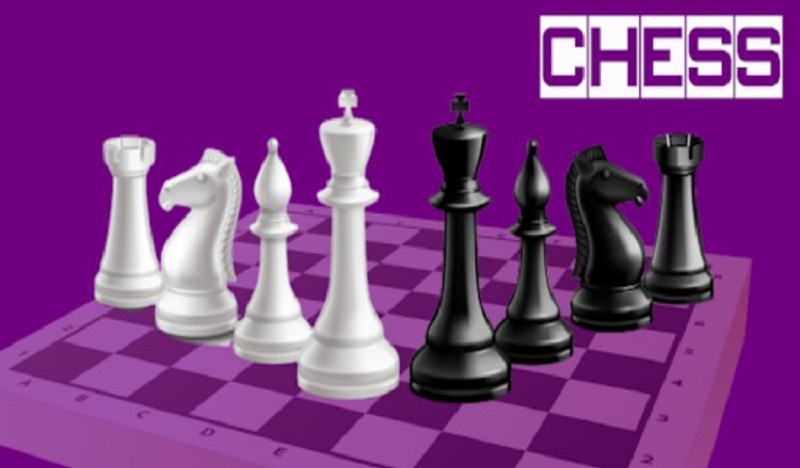It is the chess grandmaster and the five-time world champion Viswanathan Anand, responsible for the increase in chess popularity in India during the past couple of decades. Playing chess online is a fantastic way for young children to learn mathematical principles and crucial cognitive abilities that they can use their entire lives, according to educators and parents today.
Top 10 Chess mistakes you should avoid
1. Barnes Opening
The Barnes Opening (1. f3), which involves moving the pawn in front of the bishop, is arguably one of the worst opening moves in chess. This move seizes control of the center and denies the knight access to the critical f3 square, which prevents piece development and compromises the king’s safety. This move places the white pieces in a worse position overall, unable to control the center.
2. Ware Opening
The Ware Opening is another poor chess opening move that beginners frequently commit. The a-rook appears pretty early in the game thanks to the ware opening move. The move is illogical because the black bishop may now control the a3 square and capture the rook with just a single black pawn move to e5. Early in the game, the Ware opening might result in the needless loss of a rook.
3. Changing Pawns Protecting the King
One of the worst chess moves is shifting the pawn to protect the castled king. The pawn’s function in front of the king is to keep the king safe. Players risk endangering the security of their king if they move that piece.
Players must refrain from moving a pawn if there is another, more advantageous move to make, and from this, it is clear to the gamers how to play chess.
4. Too Early in the Queen’s Development
Chess players discover that the queen is the most crucial when they grasp the game’s rules. They might attempt to maximize it right away as a result of this. However, it is much preferable to train bishops and knights initially. If the queen is moved too soon or used to make threats, the opponent pieces may assault it.
5. Grob’s Attack
The Grob’s attack, an erroneous opening, is among the worst plays white can make in chess. The white in this opening shifts its pawn from g2 to g4.
Black may answer with 1. D5 provided the black bishop with a route to the white pawn. Thus, Grob’s attack makes the white’s position worse. Hence, it advances slowly.
6. Casting in some circumstances
Castling is always a smart move. However, there are times when it is not your best move. Castling on the king’s side is one of the worst chess moves, for example, when the black knight and queen are posing a threat to the white kings, and the white player has double pawns on f2 and f3. Castling on the queen’s side is significantly safer in this scenario, where the enemy’s pieces are active on the king’s side of the board, and the pawn structure is compromised.
7. A4 and H4 are used to start the game
It is a poor chess move since it hinders the growth of the pieces. Additionally, the early development of the bishops is hampered by the underdevelopment of the pawns, d, and e. If players wish to have an advantage over their opponents, developing the correct pieces and making well-thought actions early in the game is essential. As a result, at the start of the online chess game the moves a4 and h4 are not seen as wise plays.
8. Opening Clemenz
This opening is on the list of poor chess moves with Grob’s Attack. The Clemenz Opening can even result in Grob’s Attack if played wisely. White begins the Clemenz opening by advancing its piece to square h3. This move is not advantageous because it does not dominate the center, castle, or develop the pieces.
9. F2 Pawn movement
The f2 square shields the king, making the f2 piece essential to the game. Understand this when you learn how to play chess. Move the pawn at f2 to create a weak opening. Black, in this chess move, has two options for checkmates. However, it is based on Fool’s mate and Scholar’s mate concepts.
10. Making errors in straightforward theoretical endgames
The players shouldn’t believe that simply practicing will enhance their chess. Thus, they should engage in doing a little research. Moreover, they should also understand that some theoretical positions are beneficial in the endgame. All players should become familiar with some fundamental ideas, such as opposition in pawn endgames and the complexities of the “rook pawn and bishop against king” endgame or the “queen versus pawn on 7th rank” endgame, in addition to the standard mates (queen vs. king, rook vs. king, two bishops vs. king).
Conclusion
Chess should be a part of the elementary school curriculum due to the enormous body of studies proving its advantages. Moreover, brain research theory proves that playing chess can help dendrite formation or growth. There are many benefits of playing chess in day-to-day life. Play chess online for free as a fresh approach to the age-old issue of inadequate education.


